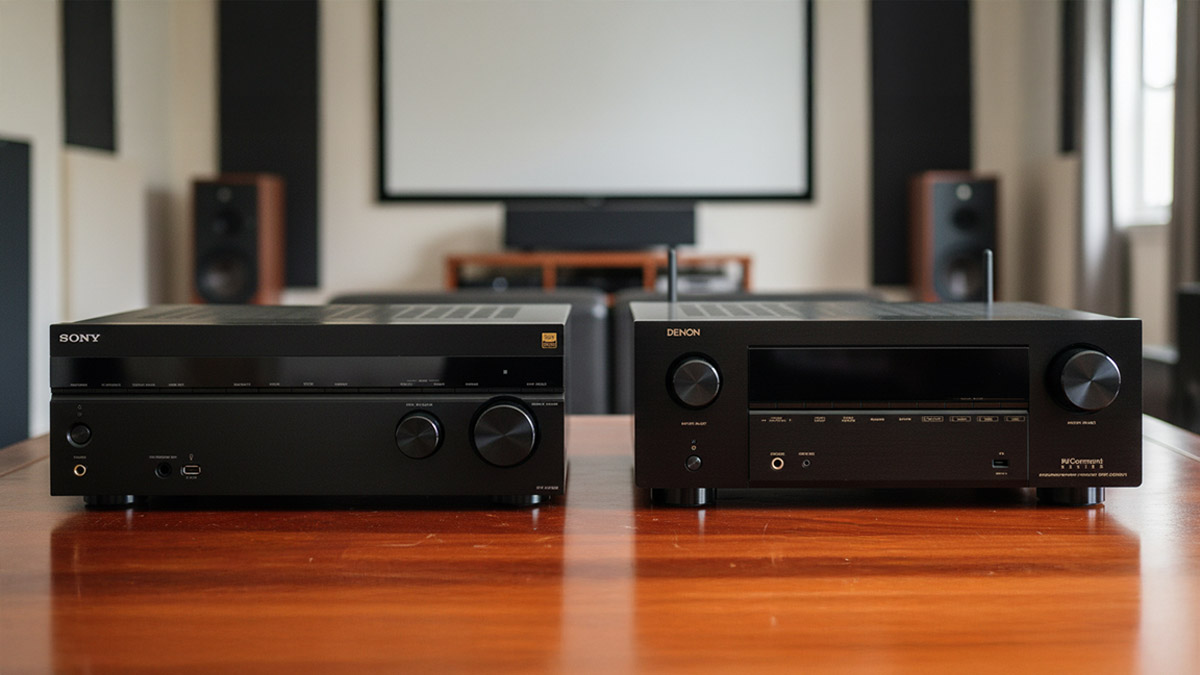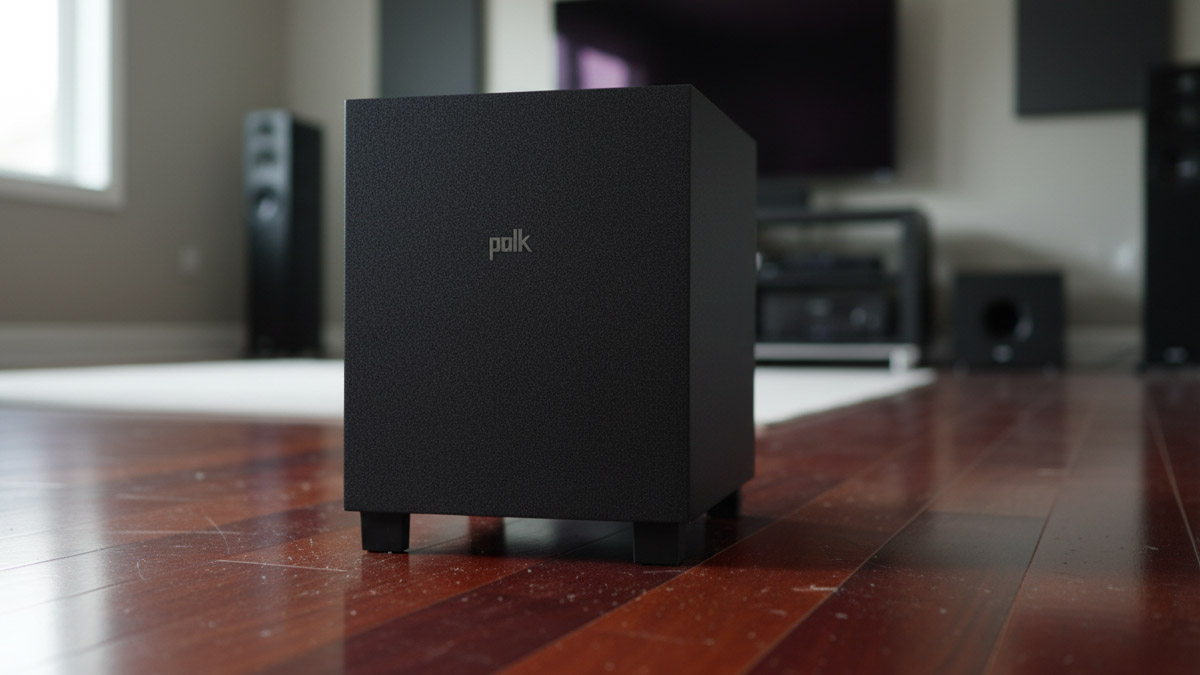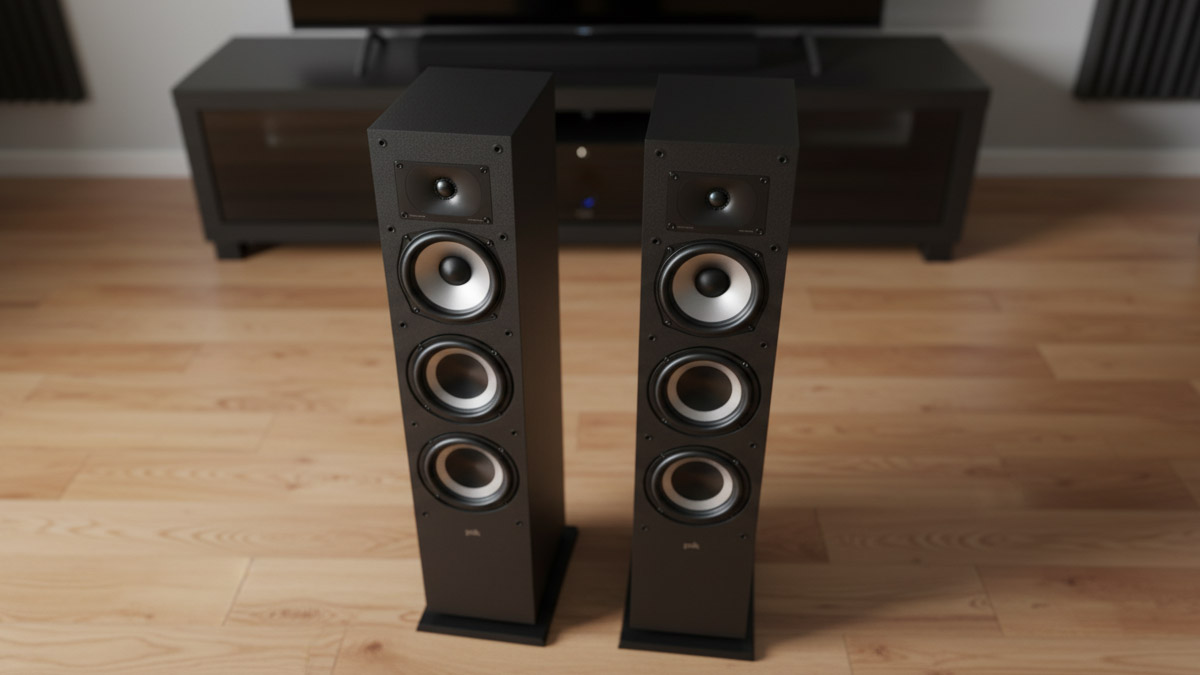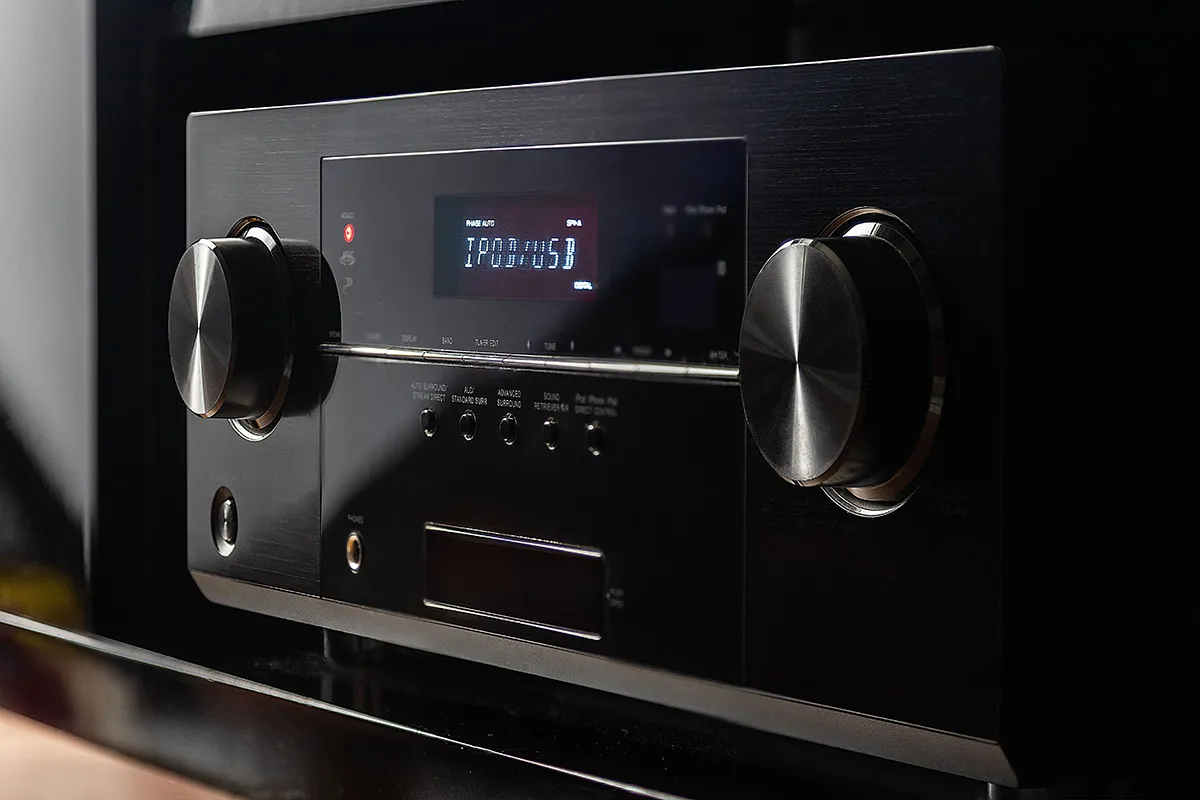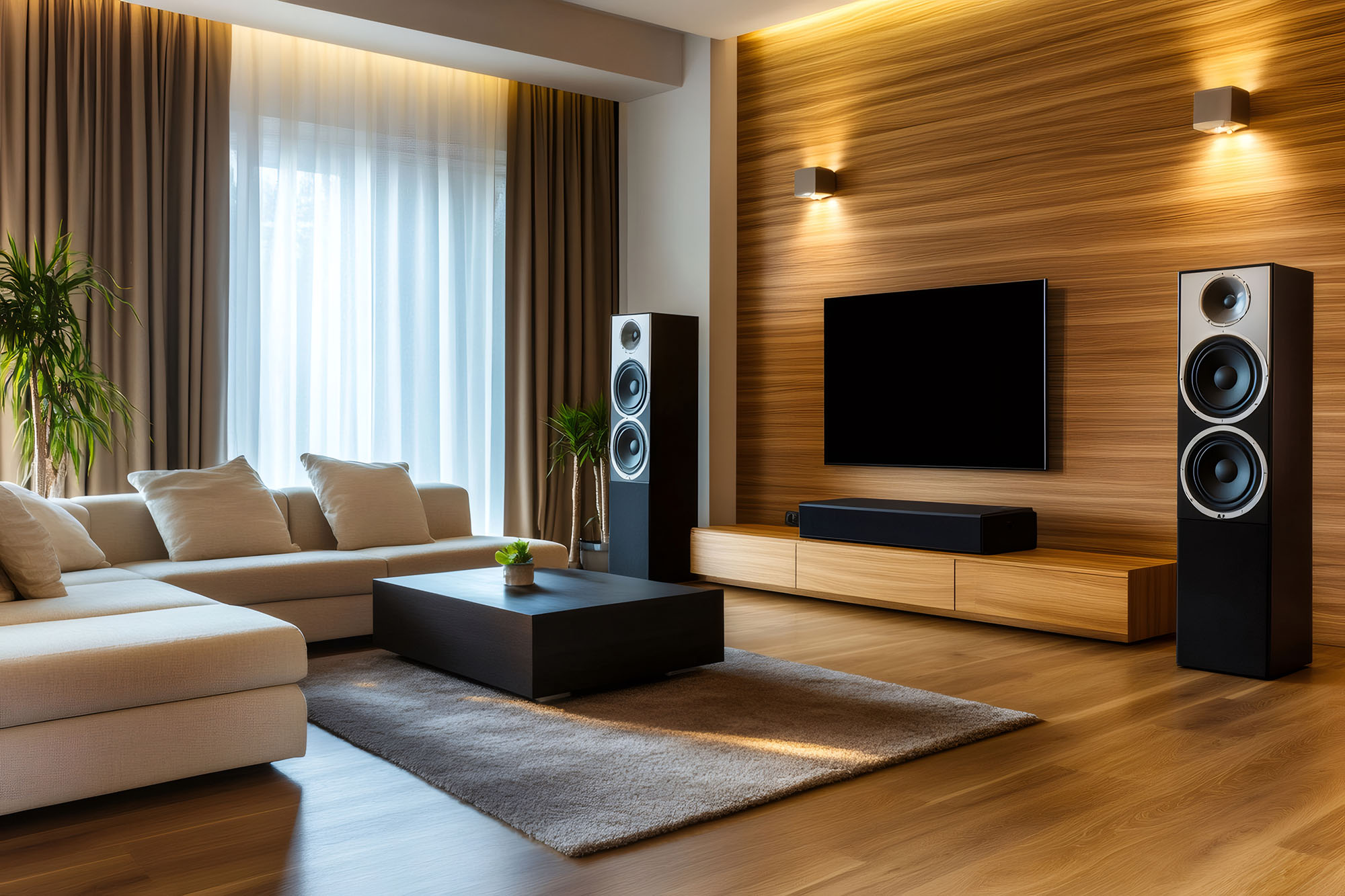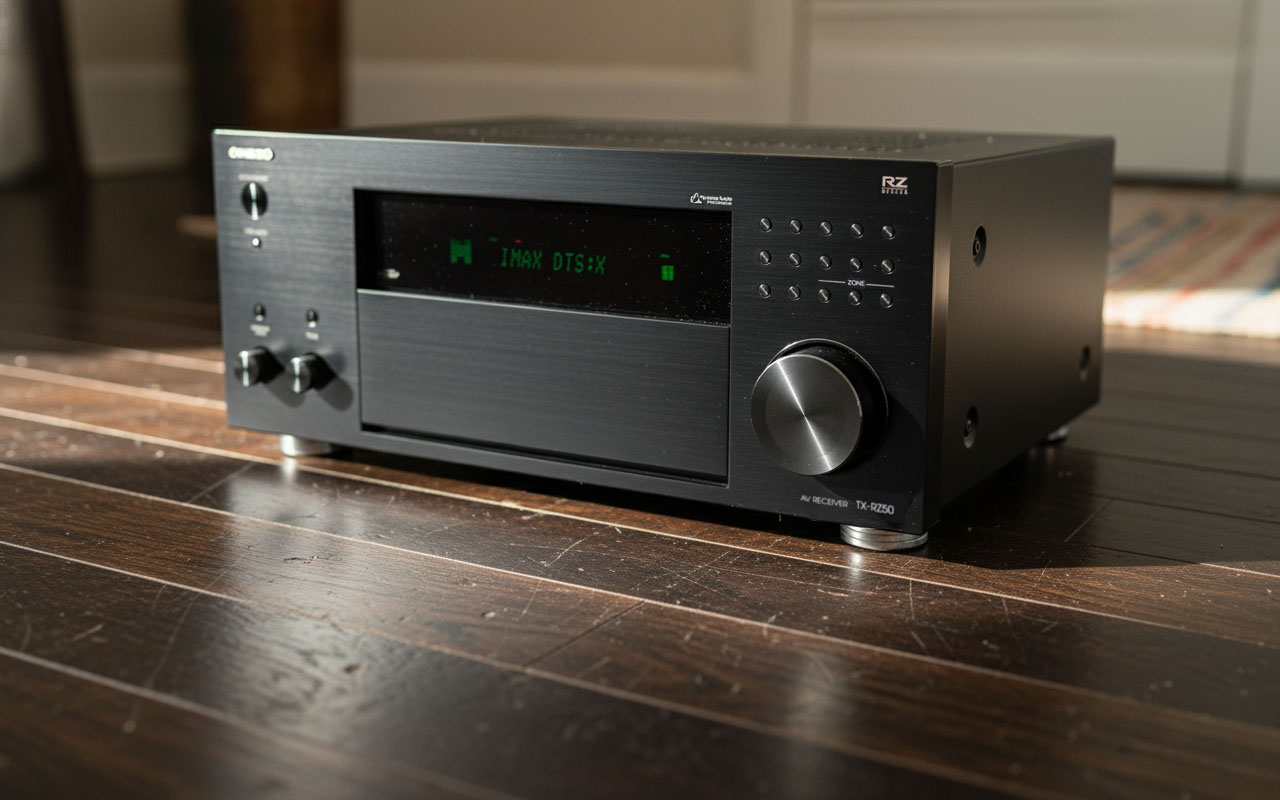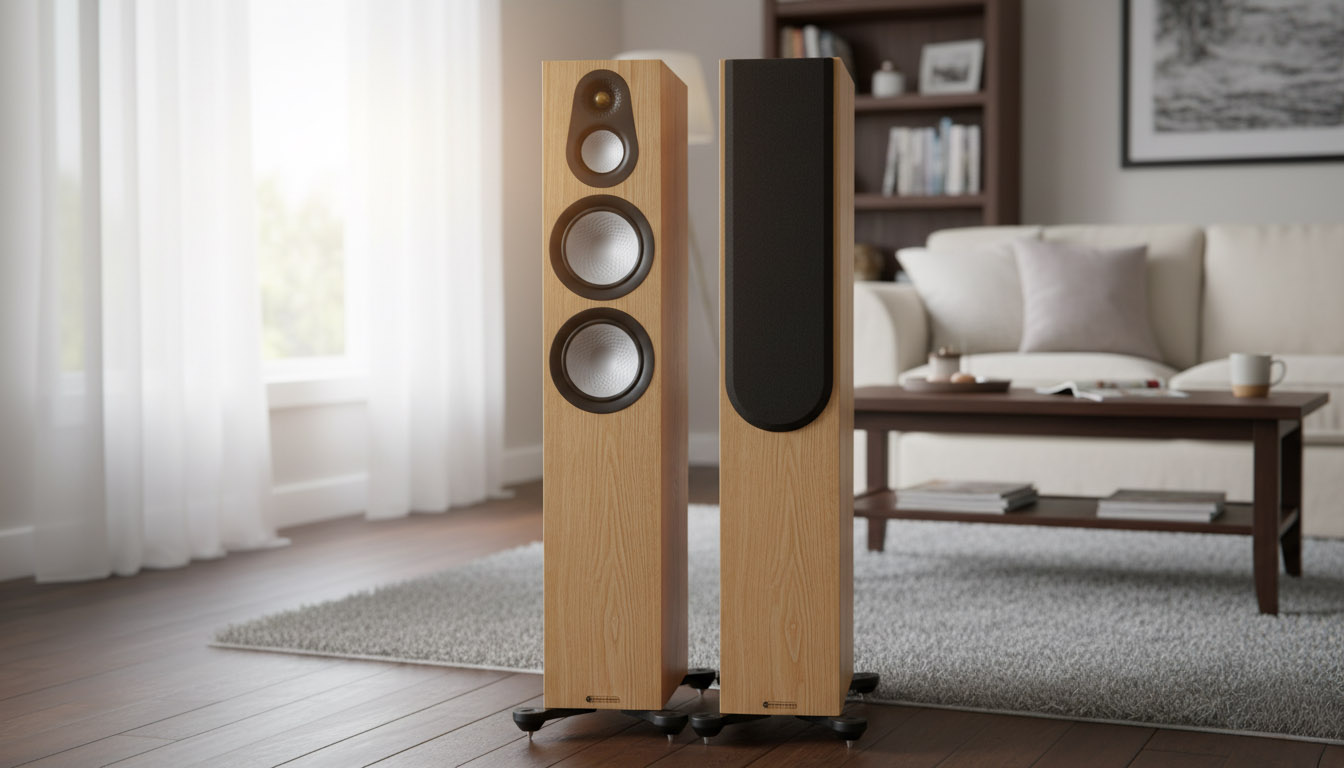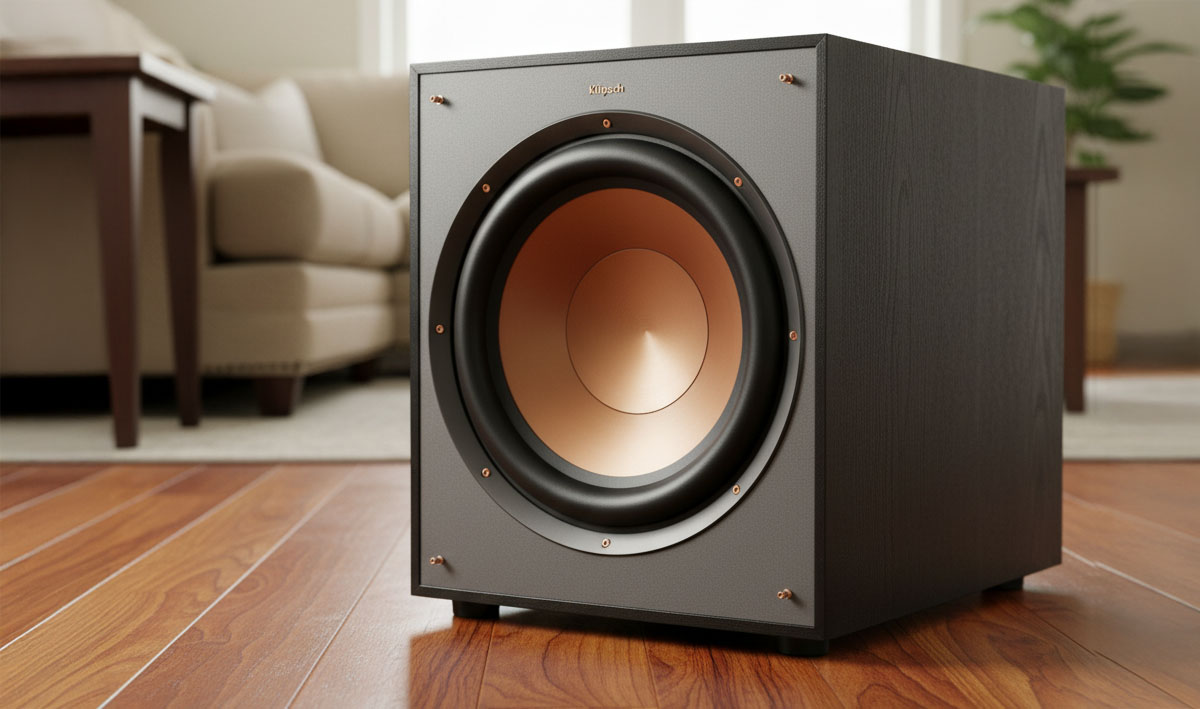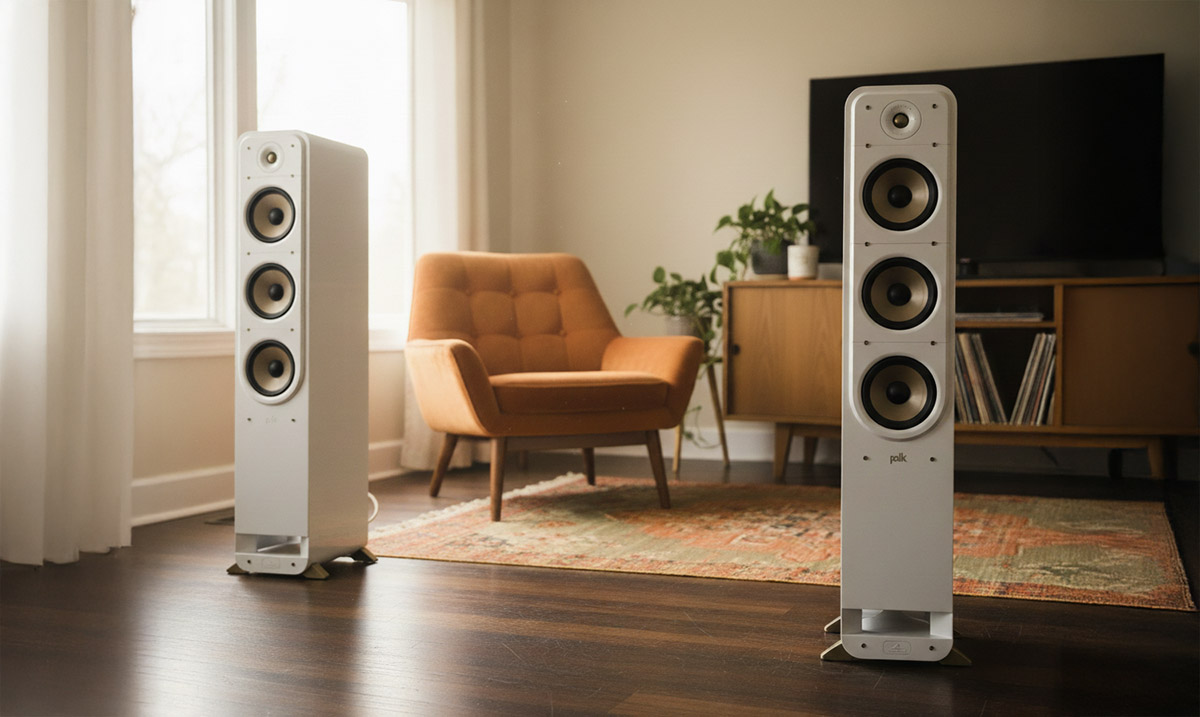Quick Take
If you want Atmos without wrestling your room, the Sony STR-AN1000 hits a sweet spot. Owners praise lively, cinematic sound, strong dialogue focus, and a quick auto-calibration that gets you 80–90% of the way there in a few minutes. Daily control is simple, streaming is built-in, and the gaming pipeline does 4K at 120 frames with VRR and ALLM on the right ports. The trade-offs: the app and menus feel utilitarian, you’ll want careful sub placement for the best bass, and Acoustic Center Sync only shines if you own a compatible BRAVIA TV.
Pros
![]() Clear dialogue and convincing Atmos bubble
Clear dialogue and convincing Atmos bubble
![]() Easy, fast auto-calibration with helpful fine-tuning
Easy, fast auto-calibration with helpful fine-tuning
![]() Reliable 4K/120 gaming on the 8K-labeled HDMI inputs
Reliable 4K/120 gaming on the 8K-labeled HDMI inputs
![]() Works neatly with BRAVIA TVs via eARC and Acoustic Center Sync
Works neatly with BRAVIA TVs via eARC and Acoustic Center Sync
![]() Solid streaming toolkit with Chromecast built-in, AirPlay 2, Spotify Connect
Solid streaming toolkit with Chromecast built-in, AirPlay 2, Spotify Connect
Cons
![]() Menu design is plain and takes a few evenings to learn
Menu design is plain and takes a few evenings to learn
![]() Best bass balance still depends on subwoofer placement
Best bass balance still depends on subwoofer placement
![]() Acoustic Center Sync requires a compatible BRAVIA—otherwise it’s unused
Acoustic Center Sync requires a compatible BRAVIA—otherwise it’s unused
![]() Only two HDMI inputs support full 8K/4K120; plan your wiring
Only two HDMI inputs support full 8K/4K120; plan your wiring
Introduction
A good receiver shouldn’t demand your attention; it should hand you bigger, clearer, more enveloping sound and then get out of the way. The Sony STR-AN1000 is aimed squarely at that idea. It’s a 7.2-channel network AVR that supports Dolby Atmos and DTS:X, runs Sony’s 360 Spatial Sound Mapping to widen the sweet spot, and brings a modern HDMI stage for 8K video and 4K/120 gaming on select inputs. Owners tend to call out how cinematic and bright-but-clean it feels with movies while staying friendly for daily TV and music. Set it up thoughtfully and it rewards you with stable imaging, articulate voices, and punch that belies modest cabinet size.
Key Features of the Sony STR-AN1000
7 amplified channels with dual sub outputs
Seven channels cover a classic 7.2 or a 5.2.2 Atmos layout. Dual subwoofer outs help you smooth bass across seats. This is a big deal in real living rooms where the couch rarely sits in the perfect spot.
360 Spatial Sound Mapping + D.C.A.C. IX auto setup
Run the mic routine and the receiver measures speaker distance, level, and timing, then builds “phantom” speakers that make the bubble feel bigger and more even. Translation: more than one person gets a good seat, and uneven rooms feel less uneven. Tip: place the mic at real listening height and include the far-end seats; the mapping uses those captures to build better phantom anchors.
HDMI that’s ready for gaming and new screens
You get six HDMI inputs total, with two 8K-labeled ports that do 8K/60 and 4K/120, plus VRR and ALLM. There are two HDMI outputs (main with eARC). Put your PS5 or Xbox into the 8K-labeled inputs for stutter-free motion and low latency; use eARC to feed lossless audio back from TV apps over one cable.
Acoustic Center Sync and Center Speaker Lift
With a compatible Sony BRAVIA TV, the panel itself can act as part of the center channel to pull voices up toward the screen center. It’s subtle but addictive with news, sports, and dialogue-heavy shows. Without a BRAVIA, you still get the standard center-lift processing that nudges dialogue upward from a low cabinet.
Streaming that behaves like your phone
Chromecast built-in and AirPlay 2 cover the big “cast from any app” use cases. Spotify Connect, Bluetooth, and Works with Sonos ensure guests and families can play what they want without re-learning a new system. If you mix Sonos rooms with the theater, the receiver can join the party rather than fight it.
A sturdier chassis than you’d expect
Sony stiffens the front panel with a sub-chassis to reduce vibration—small engineering touches that keep micro-detail intact at real-world volumes. You won’t see it, but you’ll notice that low-level clarity most at night.
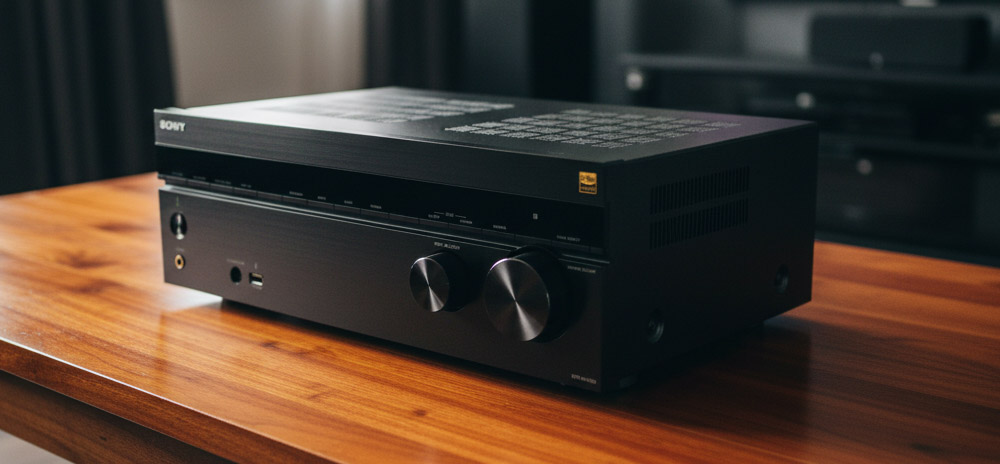
Sound Quality and Setup
Most user feedback clusters around three points. First, dialogue clarity. The Sony STR-AN1000 places voices forward without sounding thin, which makes busy mixes less fatiguing. Second, the surround bubble feels wide and stable; pans are clean, and the rear channels don’t shout. Third, it gets along with average-sensitivity speakers—think mainstream towers and bookshelves—and still sounds composed at family-friendly volume.
Calibration is quick, but there’s more on the table if you slow down. Do one full D.C.A.C. IX pass, then adjust the sub level by ear over a few days. Many listeners find speech clicks into focus when the sub is trimmed 1–2 dB lower than the auto result. Also, place your surrounds a bit higher than ear level; the spatial mapping builds better phantom height cues when the side energy isn’t blocked by furniture.
Gamers fare well as long as they wire smartly. Use certified Ultra High Speed HDMI cables, plug next-gen consoles into the 8K-labeled inputs, and enable “Enhanced format”/“4K120” on the TV’s HDMI ports plus eARC in the TV’s sound menu. Miss one toggle and you can see a handshake delay or a blank screen until the chain agrees. Get it right once and it’s set-and-forget.
A useful twist if you own a newer BRAVIA: Acoustic Center Sync. When it’s enabled, voices feel physically tied to the screen rather than to a low cabinet shelf. It’s not magic, it requires a compatible TV and proper setup, but it’s the kind of upgrade you feel immediately. After major firmware updates, it’s worth re-running the sync or power-cycling the chain if dialogue suddenly feels off.
Practical insights
- Phantom height that helps “non-ideal” rooms. 360 Spatial Sound Mapping is most impressive in asymmetrical spaces. If one surround sits closer to a wall than the other, the phantom anchors keep pans from lurching across the gap. Think of it as softening the room’s rough edges without more speakers.
- Dialogue lift without buying a new center. If your center is trapped low in a media console, the Center Speaker Lift processing nudges the image up. It won’t defy physics, but it often fixes the “voices feel like they’re in my cabinet” problem. Pair it with mild toe-in on the L/R fronts for the best effect.
- Sub placement > sub specs. Two sub outputs are great, but the better win is experimenting along the front wall midpoints and quarter points, then re-running calibration. Even small moves change modal peaks a lot in typical living rooms.
- When the BRAVIA trick matters. Acoustic Center Sync helps most in wide seating or wall-mounted TVs above a console. In a narrow room with a screen at ear height, you’ll hear less difference—good to know before you chase cables.
Who Is It For?
Choose the STR-AN1000 if you want a one-box brain for a 5.1.2 or 7.2 setup that feels modern, plays nice with consoles, and doesn’t punish you for imperfect rooms. It’s especially attractive for BRAVIA households that can use Acoustic Center Sync and Bravia Sync control over eARC. If you’re pushing very large rooms or nine-plus channels, you’ll eventually want a step-up model with more amps and processing.
Tips for better results
- Put your fronts so tweeters sit near seated ear height; give them a small toe-in toward a point just behind your main seat.
- Run D.C.A.C. IX in a quiet room, mic at ear height, and include the far seats; that improves the stability of the phantom field.
- Start with an 80 Hz crossover for all speakers; trim sub level by ear after two or three evenings.
- Wire consoles into the 8K-labeled inputs; enable VRR/ALLM on the TV and eARC on the main HDMI out.
- If using a BRAVIA, enable Acoustic Center Sync and re-run the routine after any major firmware update.
Alternatives to consider
- Denon AVR-X1800H:
It powers a 5.2.2 Atmos layout cleanly, runs Audyssey MultEQ to tame small-room quirks, and gives you three HDMI 2.1 inputs for 4K/120 gaming alongside eARC for painless TV-app audio. It’s not chasing boutique tricks; it’s the dependable option that gets the fundamentals right and leaves a clear path to grow.
RELATED: Review of the Denon AVR-X1800H
- Yamaha RX-V6A:
Polished UI and MusicCast; YPAO room correction is solid, and it’s a favorite for music-first users. Lacks Sony’s phantom-speaker mapping and BRAVIA tricks.
RELATED: Review of the Yamaha RX-V6A
- Onkyo TX-NR6100:
Punchy sound and, in some variants, Dirac Live support; fewer Sony-specific integrations but a strong gaming pedigree. Check licensing details if Dirac matters to you.
Final Thoughts
The Sony STR-AN1000 succeeds where many midrange AVRs stumble: it feels powerful and cinematic without turning setup into a hobby. The sound is open, dialogue stays anchored, and the spatial mapping makes off-center seating far more listenable than you’d expect. Treat the menus as a one-time learning curve, be deliberate with sub placement, and wire your gaming sources to the right ports. Do that, and this Sony becomes an easy recommendation, doubly so if a BRAVIA TV is in the mix.
FAQ
Does it really support 4K/120 for gaming?
Yes—on its 8K-labeled HDMI inputs. Use certified Ultra High Speed cables and enable the TV’s enhanced 4K/120 settings.
Can I use my Sony TV as the center channel?
If it’s a compatible BRAVIA model, yes, via Acoustic Center Sync. Otherwise, you still get Center Speaker Lift processing through your physical center speaker.
What streaming methods are built in?
Chromecast built-in, AirPlay 2, Spotify Connect, Bluetooth, and “Works with Sonos.” That covers phones, tablets, and multiroom needs.
How powerful is it, really?
In stereo testing the amp delivers around 90 watts per channel into 6 ohms at low distortion. Real-world multichannel power depends on speaker sensitivity and seating distance.
Will it fix my room’s bass problems?
It helps, but placement rules. Use the dual sub outs if you can, try mid-wall positions, and re-run calibration after moves. The spatial tools improve envelopment; sub placement still drives bass smoothness.
Teksignal.com participates in the Amazon Services LLC Associates Program, an affiliate advertising program designed to provide a means for sites to earn advertising fees by advertising and linking to Amazon.com. The reviews on this site are hands-off consensus reviews. We analyzed owner feedback across the internet and manufacturer documentation. We summarize sentiment; we do not republish individual user posts.



